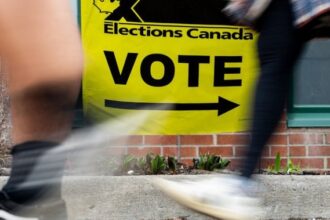In a high-stakes economic standoff that has Canadian officials scrambling, Ottawa’s planned countermeasures against the United States’ aluminum and steel tariffs are rapidly evolving into a complex diplomatic chess match. What began as a straightforward tit-for-tat response has transformed into a nuanced strategy that weighs economic impact against political messaging as Canada navigates the unpredictable terrain of Trump-era trade relations.
“We’re entering uncharted waters with these retaliatory measures,” said Dr. Elaine Thompson, director of the Canadian Institute for Trade Policy. “The government is trying to balance hitting American political pressure points without causing self-inflicted wounds to Canadian businesses and consumers.”
Initial plans for dollar-for-dollar retaliation on $3.6 billion worth of American imports are being recalibrated after intensive consultations with industry stakeholders revealed unexpected complications. Sources within Global Affairs Canada confirm that the preliminary list of targeted products is undergoing significant revisions following feedback from Canadian businesses dependent on U.S. supply chains.
The stakes couldn’t be higher for Canada’s economic recovery. With pandemic-related challenges already straining resources, this trade dispute adds another layer of uncertainty to an already precarious situation. Data from Statistics Canada indicates that cross-border supply chains support approximately 1.7 million Canadian jobs, highlighting the delicate balance officials must maintain.
What’s emerging is a more surgical approach to retaliation. Rather than broadly targeting American goods, Ottawa appears to be focusing on products that can be sourced from alternative suppliers or that specifically impact Republican-held districts ahead of November’s U.S. election.
“The government is taking a much more calculated approach than in 2018,” noted Jennifer Baker, senior economist at RBC Capital Markets. “They’re looking beyond the immediate reaction to consider second and third-order effects on Canadian businesses, particularly those with integrated North American operations.”
Industry consultations have revealed surprising complexities. Several Canadian manufacturers have privately lobbied against tariffs on specific American inputs they consider irreplaceable in their supply chains. Meanwhile, consumer advocacy groups have expressed concerns about potential price increases for everyday items if certain consumer goods are targeted.
Deputy Prime Minister Chrystia Freeland, who is overseeing the response, has emphasized that Canada’s measures will be “perfectly reciprocal” while acknowledging the need for precision. “We won’t be bullied, but we will be strategic,” she stated during a recent press conference.
The revised strategy also appears to have a more sophisticated political dimension. Sources familiar with the planning indicate that Ottawa is coordinating with other U.S. trading partners affected by similar tariffs, including the European Union, to amplify the impact of their collective response.
“There’s a recognition that coordinated pressure from multiple trading partners stands a better chance of changing the calculus in Washington,” said Michael Kergin, former Canadian ambassador to the United States.
The timing of Canada’s countermeasures remains uncertain. While initially planned for mid-September, officials are now considering a phased implementation that would provide American negotiators with opportunities to resolve the dispute before the full suite of retaliatory measures takes effect.
This more measured approach represents a departure from Canada’s swift and decisive retaliation during the 2018 tariff dispute. The shift reflects both the lessons learned from that experience and the increasingly complex nature of Canada-U.S. economic integration.
Business leaders across Canada have expressed cautious support for the government’s more deliberate approach. “We appreciate that officials are taking the time to understand the potential ripple effects throughout supply chains,” said Catherine Swift, chair of the Canadian Federation of Independent Business.
As this economic brinkmanship unfolds against the backdrop of a pandemic and U.S. presidential election, one question remains paramount: Can Canada craft a response that protects its economic interests while sending a clear message that unilateral tariffs won’t go unanswered? The answer may determine not just the outcome of this dispute, but the future pattern of North American trade relations.

























